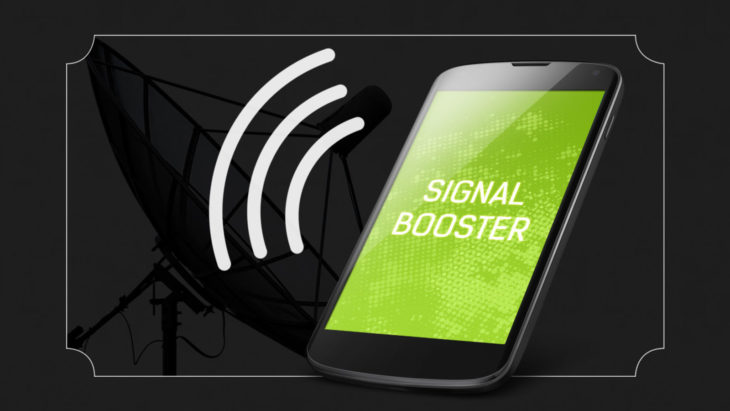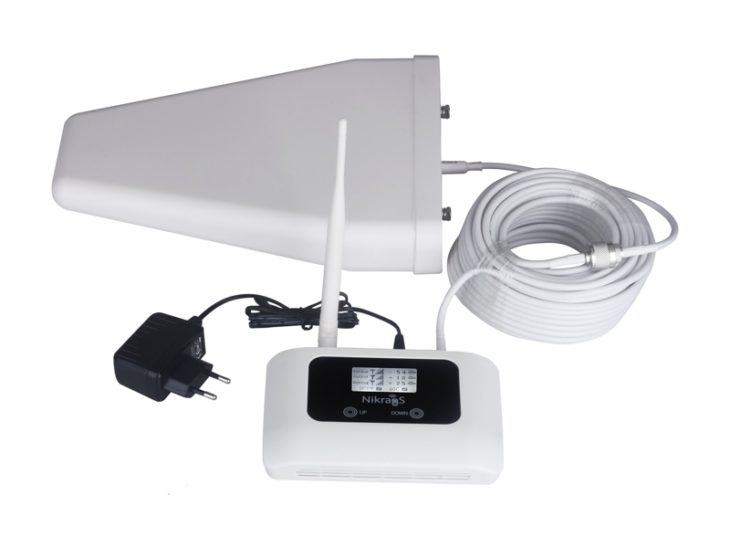A mobile phone signal booster, also known as a repeater or amplifier, mainly consists of three elements: interior antenna, amplifier, and external antenna. These components collectively make a wireless system that boosts cellular reception. This article talks particularly about how these signal boosters work and what types of boosters are available in the market.
Contents
An Overview
A mobile phone signal booster is, in general, a repeater system that the amplifier adds or gains the power to the reception in several directions. Maximum gain, even in cheap signal boosters, differs by application. The exterior antenna works as a receiver as well as a transmitter to transmit the signal to a cellular tower with increased sensitivity and power. Normally, the power gain is not below 9 dB and can go above 10 dB. The system’s electrical conduit consists of a coaxial cable that affects the transmission loss.
The ultimate goal of a mobile phone signal booster is to take the current phone call signal around your home, workplace, or car and amplify it. The signal is amplified and rebroadcasted to the area with a weak signal or no reception. Apart from an amplifier and an external antenna, there are systems that come with an amplifier and an internal antenna as a single unit that makes them superb for indoor signal boosting. But in most cases, the three components are detached and also come with other optional appliances like Attenuator to reduce the unwanted frequency, Splitter and Tap, and Lightning Surge Protector.

Source: Lifehacker
Working of A Mobile Phone Signal Booster
Mobile phone signal boosters for other carriers are used if the signal reception in a particular area is weak. The mobile phone signals are weakened due to various reasons like distance from the tower, trees or buildings in between, hills, etc. In such cases, signal boosters come into play. You should keep in mind that the mobile signal is nothing, but the strength of the signal that is sent to a mobile phone.
Firstly, the outside antenna captures the mobile phone reception. Then the amplifier amplifies and rebroadcasts across the home or building through the internal or inside antenna. This process results in a boosted mobile signal in remote places. You can enjoy better call quality and faster internet browsing after the boosting of the signal. This process can be applied to all mobile networks like GSM, LTE, CDMA, EVDO, UMTS, HSPA+. Etc.
Another benefit of boosted connection is a significant increase in battery life as it gets extended by 150 to 180 minutes of extra talk time. You can choose a mobile phone signal booster at myamplifiers.com that works with all types of cellular devices.

Source: Pinterest
Types of Mobile Phone Signal Boosters
In general, there are two types of mobile phone signal boosters.
1. Analog Signal Amplifiers/ Bi-Directional Amplifiers
Most of the signal boosters are essentially analog signal amplifiers. Analog signal boosters use traditional technology to amplify all cellphone carrier frequencies. Analog signal amplifiers also work as broadband (wideband) amplifiers and are generally sold together with a kit and an outdoor antenna cable. However, installation is needed for such appliances. Sometimes, analog signal amplifiers are also referred to as Bi-Directional amplifiers or BDAs. BDAs are compulsory for many localities under the law to allow their first responders to maintain contact in different areas for emergency situations. Bi-Directional amplifiers are used for two-way radio use as well as mobile phone signal amplification.
2. Smart Signal Boosters
Smart signal boosters are a relatively new form of mobile phone signal booster. Small signal boosters use powerful digital baseband processors that first clear the coverage and then proceed with re-broadcasting. Smart signal boosters come with more than 100 dB gains whereas analog boosters of the same league have 63 dB to 70 dB gains. Smart signal boosters come with a lot of additional features like internal antenna inside the box, no need for outdoor antennas, and ‘plug and play’ option. Because of modern technology and added features, Smart signal boosters are more expensive than analog boosters.
Reasons for Weak Signal

Source: createindie.blogspot
A weak signal can be a result of a few different factors. Some of them are discussed below.
Distance Between Your Vehicle/Home The Cellular Tower
One of the primary reasons for a weak mobile signal is the distance of your home or office from the mobile tower that is nearest to you. The closer you are to the mobile tower, the better signal you will receive. Similarly, the far you get from the tower, the worse the signal becomes.
Interferences From External sources
External interferences may also affect your mobile coverage. Cellular signals are, in general, radio waves that travel a long distance to reach to your phones. For the waves to be transmitted effectively, a clear line to the carrier’s tower is required. Other than that, other outside interruptions like skyscrapers, mountains, trees, elements like snow, rain, and thunderstorms weaken the signal reception.
Interference From The Inside
Internal interferences also weaken the reception of cellular signals. Thick building materials such as thick concrete, layers of brick, glasses, and metal, radiant barriers, magnetic and electronic clutter, and conductive materials that block or weaken the signal reception are also accountable for bad signal reception. There are chances that your signal strength is very strong, and the tower is located near your location, but you will receive a bad mobile signal due to internal interferences.
